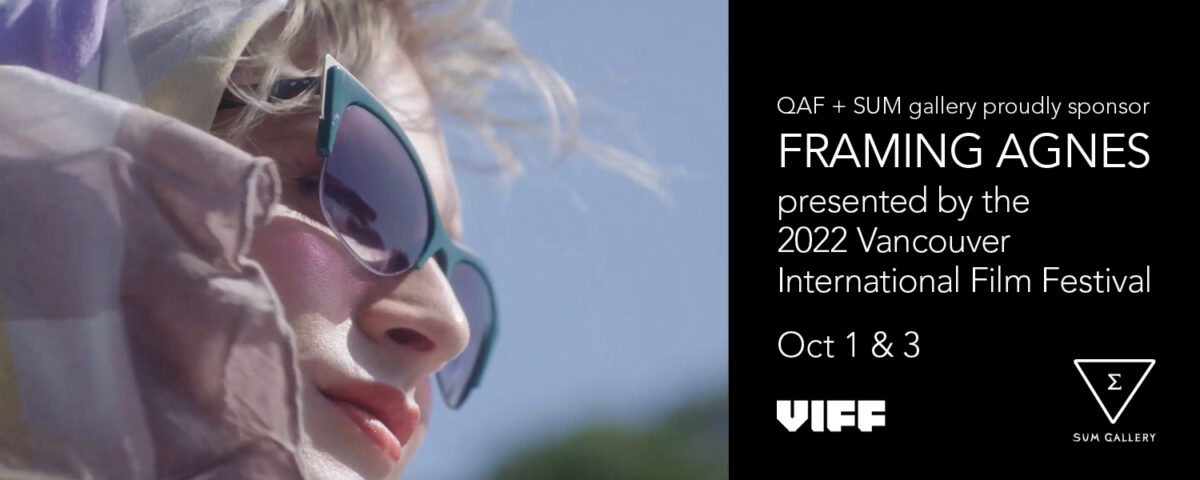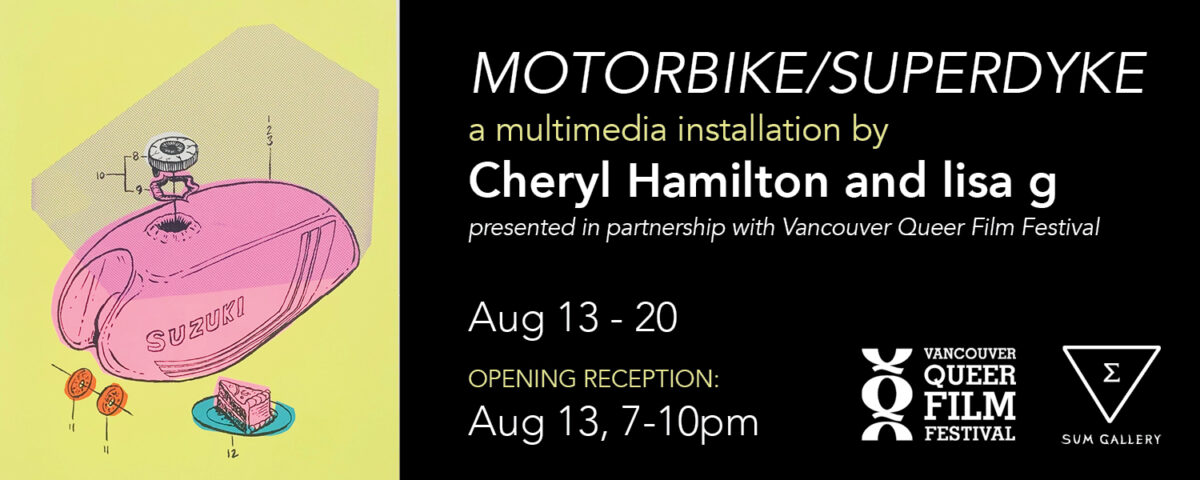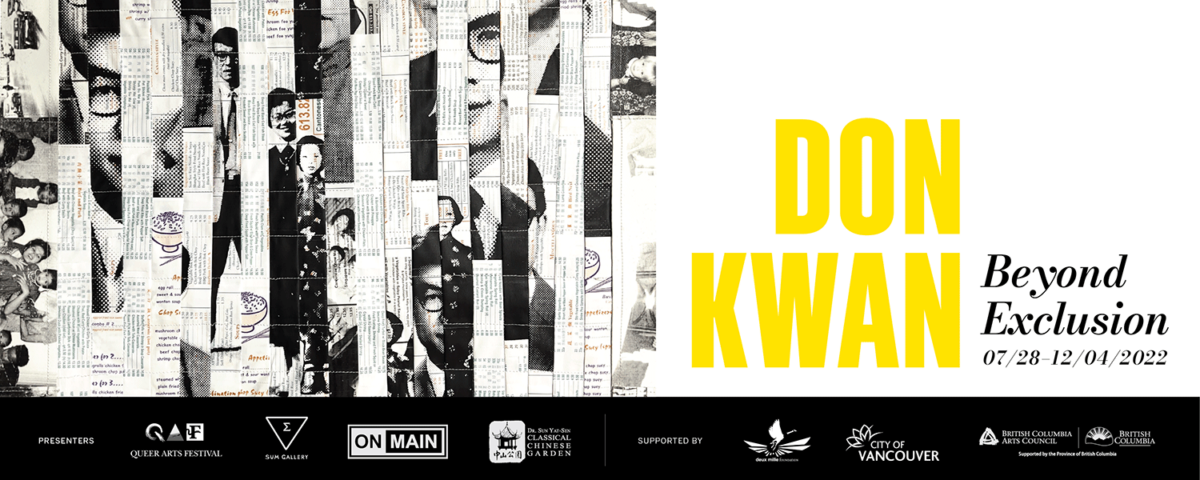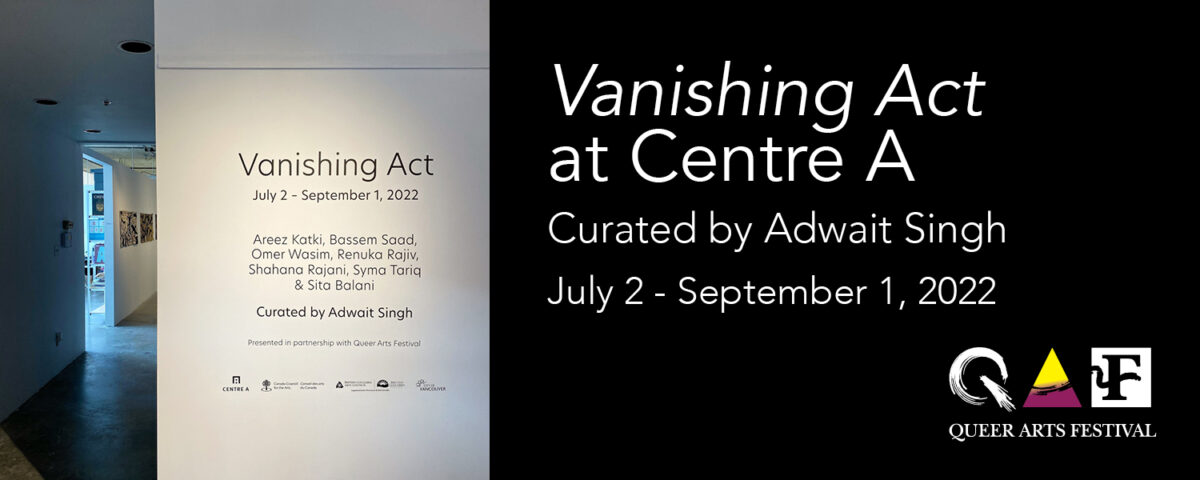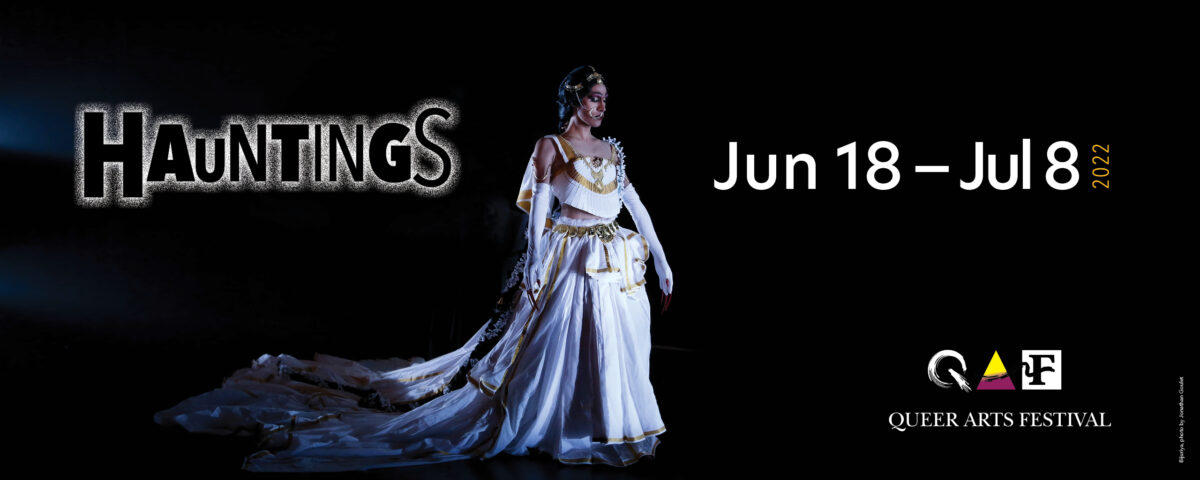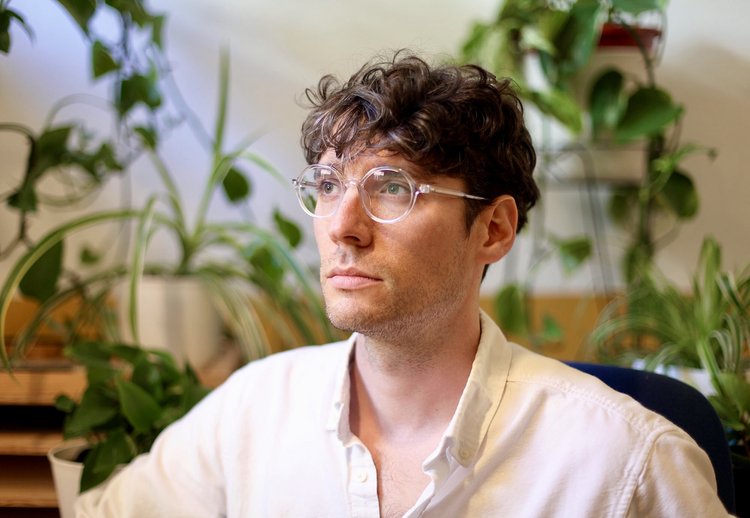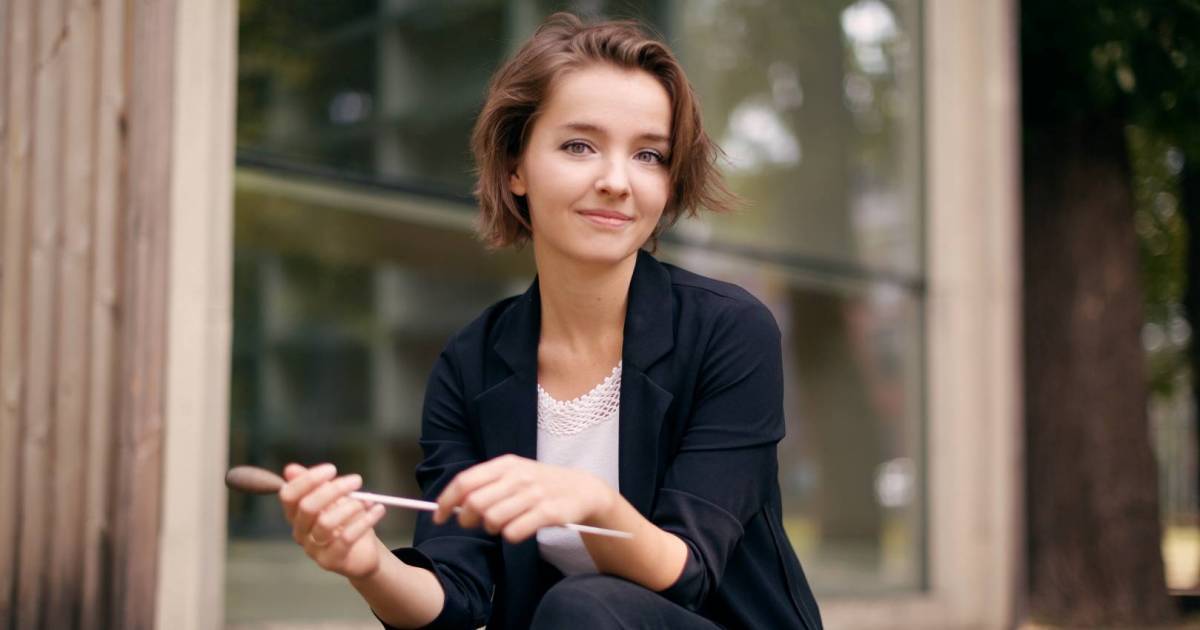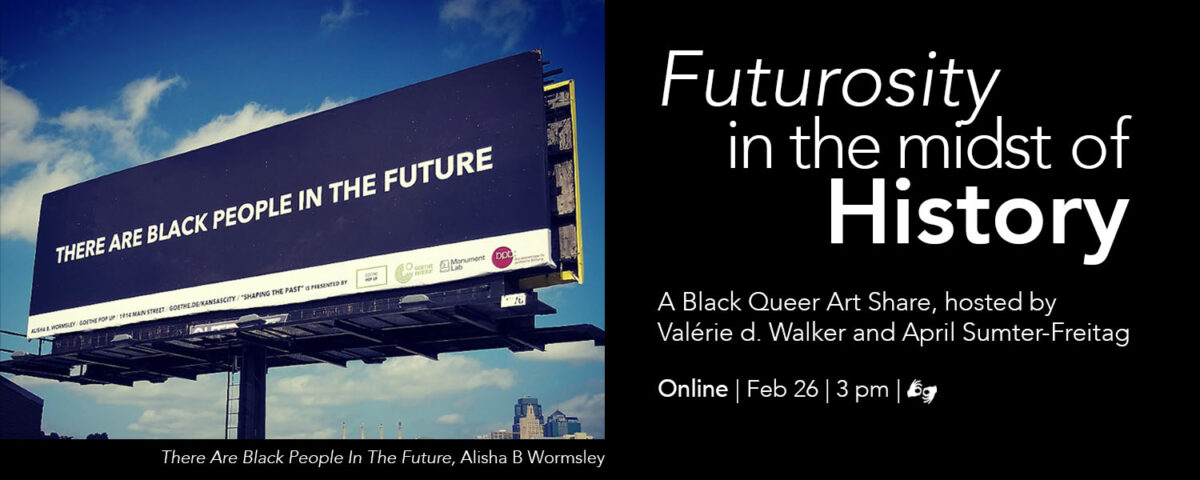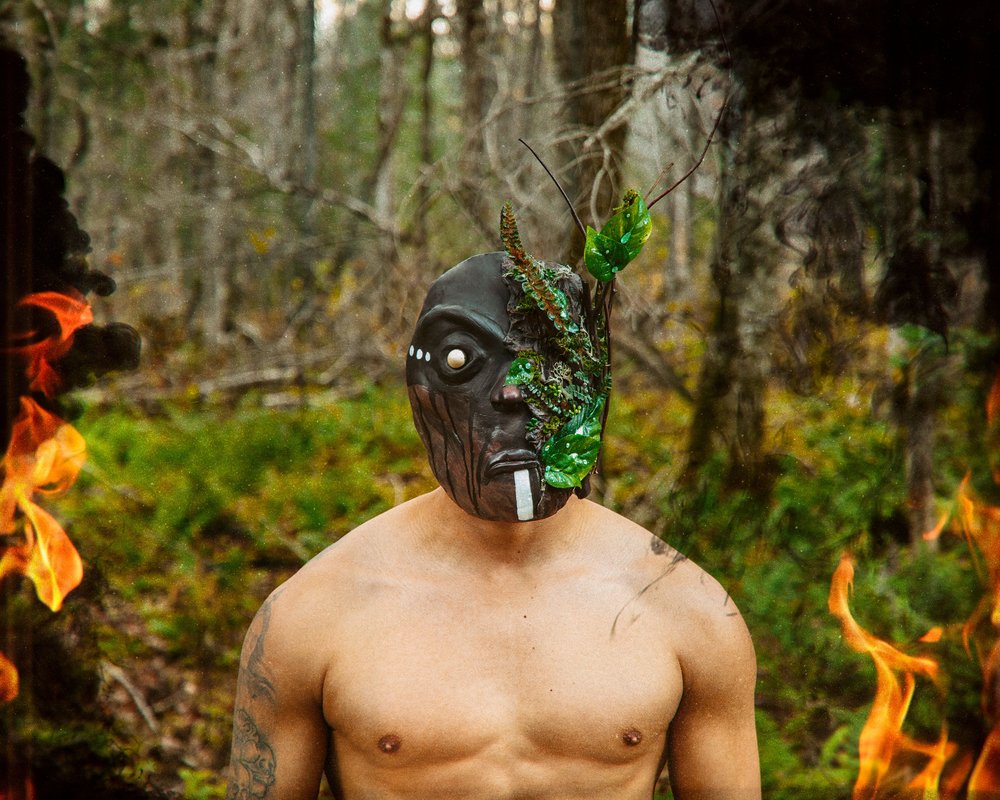Author: tempadmin
MOTORBIKE/SUPERDYKE
SUM gallery
co-presented in partnership with Vancouver Queer Film Festival
Opening reception: Sat, Aug 13, 7 to 10pm
Installation runs Aug 16 to 20, 12 to 6pm. Daily drop-in zine workshops from 3 to 6pm.
MOTORBIKE/SUPERDYKE is a collaborative multimedia installation by Cheryl Hamilton and lisa g, based on lisa g’s diaries about coming out and sorting through queer stereotypes circa 2000. Illustrations, art prints, an animated film and a zine echo a time and place and reflect upon personal identity politics.
Cheryl Hamilton is a conceptual artist with a penchant for visual ingenuity. She imbues her artwork with a kineticism inspired by her education as an animator at Vancouver’s Emily Carr Institute. She enjoys the process of collaboration and experimentation and tries to remain flexible in approaching mediums preferring the concept to dictate the ingredients. Although Cheryl has been working as a large-scale sculptor (blown glass, stainless steel, cast bronze) she has continually returned to the medium of drawing and painting as it serves as the backbone of her art practice.
lisa g is an artist/filmmaker living on the unceded and stolen territories of the xʷməθkʷəy̓əm (Musqueam), Sḵwx̱wú7mesh (Squamish), and Sel̓íl̓witulh (Tsleil-Waututh) Nations. They are interested in work that has historical reference, social relevance & where possible, humour. They work independently, with other artists and within communities. lisa g is a founding member of Vancouver’s Iris Film Collective, which promotes the creation and sharing of analog film and they are the producer/mentor of Our World which supports the creation of Indigenous self directed short films. lisa g’s work screens internationally and has won awards.
Don Kwan: Beyond Exclusion
JUL 28 TO DEC 4: DON KWAN: BEYOND EXCLUSION EXHIBITION
Dr. Sun Yat-Sen Classical Chinese Garden, 578 Carrall St., Vancouver
Beyond Exclusion is Don Kwan’s first solo exhibition in Vancouver. Based in Ottawa, Kwan is a queer third-generation Chinese Canadian artist whose work is influenced by his upbringing in a family-owned restaurant in Ottawa’s Chinatown. He uses mixed media, found objects, and sourced personal text and photographs to explore questions of identity, belonging, and place, reflecting on his family history while weaving intriguing stories about the Chinese Canadian diaspora.
Beyond Exclusion brings together Kwan’s diverse body of work along with new site-specific installations.
Don Kwan: Beyond Exclusion is presented by SUM gallery in collaboration with On Main Gallery and Dr. Sun Yat-Sen Classical Chinese Garden. The exhibition is curated by Debbie Cheung, Mark Takeshi McGregor, and Paul Wong. Don Kwan: Beyond Exclusion is generously funded by the BC Arts Council, City of Vancouver, and Deux Mille Foundation.
ABOUT DON KWAN
What can belonging look like? A third-generation Chinese Canadian, Don Kwan turns to his own experiences and challenges of being a gay, East Asian artist as a way to ground in broader conversations about identity, representations, and intergenerational memory-making in the diaspora.
关日安是一位第三代华裔加拿大同性恋画家。他的作品探索历史长河中的家庭记忆、象征、身份 及地点.
Pride in Chinatown
July 24-30, 2022
Founded by On Main’s Artist Director, Paul Wong and Dr. Sun Yat-Sen Classical Chinese Garden, Pride in Chinatown is the first public celebration of queer pan-Asian Canadian art in Vancouver’s Chinatown. What began as a small, one-day event in 2018, has grown tremendously over the years. For the first time in 2022, On Main is expanding Pride in Chinatown into a multi-day festival, presented in partnership with the Queer Arts Festival + SUM gallery! To find out more about Pride in Chinatown, visit www.prideinchinatown.com.
Pride in Chinatown events:
Jul 24, 12 to 3pm: Dim Sum Brunch
Floata Seafood Restaurant, 180 Keefer St., Vancouver
Regular admission tickets: $55 + tax and fees
Celebrate Pride with an all-age friendly arts and culinary event in Chinatown!
Hosted by the legendary China Doll, the Pride in Chinatown Dim Sum Brunch is a unique cultural experience that celebrates LGBTQ+ families and legacy businesses in Chinatown. A curated selection of piping-hot dim sum will be served alongside a lineup of delightful performances:
- Immerse yourself in China Doll’s queer diasporic humor! A beloved Ottawa icon, China Doll is famous for hosting drag karaoke and bingo in flamboyant costumes and over-the-top wigs at her family’s Shanghai Restaurant.
- Learn about the culture of dim sum from William Liu, owner of the family-run Kam Wai Dim Sum in Vancouver’s Chinatown. He will walk you through the art of enjoying “morsels of the heart” and perform Chinese and English opera.
- Sample Pu-erh prepared by tea master Olivia Cheung from the Treasure Green Tea Company in Vancouver’s Chinatown. She will take you on a journey to Yunnan, China, where the best Pu-erh is produced.
- Stand in solidarity with the Asian LGBTQ+ community through spoken-word artist Lyle Chan’s heartfelt poetry readings.
- PLUS 50/50 draw!
Each ticket includes tea, two dim sum dishes, entertainment, and gratuity. Tables are available for groups of six and eight, with a limited number of tables available for groups of four. A party of fewer than four people will be seated at a larger table with other small groups.
Additional food and alcoholic beverages can be purchased from the restaurant. Doors will open at 12pm, and food will be served from 12:30–1:00pm.
JUL 28 TO DEC 4: DON KWAN: BEYOND EXCLUSION EXHIBITION
Dr. Sun Yat-Sen Classical Chinese Garden, 578 Carrall St., Vancouver
Free opening reception Tickets: July 28, 5:00–8:00pm
Beyond Exclusion is Don Kwan’s first solo exhibition in Vancouver. Based in Ottawa, Kwan is a queer third-generation Chinese Canadian artist whose work is influenced by his upbringing in a family-owned restaurant in Ottawa’s Chinatown. He uses mixed media, found objects, and sourced personal text and photographs to explore questions of identity, belonging, and place, reflecting on his family history while weaving intriguing stories about the Chinese Canadian diaspora.
Beyond Exclusion brings together Kwan’s diverse body of work along with new site-specific installations. In the exhibition opening on July 28, Kwan will perform Altering the Flow of Exclusion to commemorate the 100th anniversary of his grandfather’s arrival in Canada from China through the port of Vancouver to Ottawa. Kwan’s brother, Edward, will host the opening as Ottawa’s legendary drag queen China Doll.
Don Kwan: Beyond Exclusion is presented by the Pride in Art Society (SUM Gallery) in collaboration with On Main Gallery and Dr. Sun Yat-Sen Classical Chinese Garden as part of the Pride in Chinatown festival. The exhibition is curated by Debbie Cheung, Mark Takeshi McGregor, and Paul Wong. Don Kwan: Beyond Exclusion is generously funded by the BC Arts Council, City of Vancouver, and Deux Mille Foundation.
JUL 30, 5 TO 10PM: NEON NIGHT GARDEN PARTY
Dr. Sun Yat-Sen Classical Chinese Garden, 578 Carrall St., Vancouver
Regular admission TICKETS: $42 + tax and fees
At door (limited quantity): $48 + tax and fees
Pride in Chinatown’s signature garden party returns with a splash of neon, featuring some of the best pan-Asian LGBTQ+ artists and their allies.
Enjoy a magical evening with a wide range of performances, art installations, and immersive experiences in the beautiful Dr. Sun Yat-Sen Classical Chinese Garden, park, and courtyard. Harkening back to when Chinatown was aglow with neon signs, you’re invited to interpret the theme “Neon Night” through your personal style and artistic expression.
Featured artists and activities:
• Land acknowledgment by Quanah Style
• Karaoke Lounge hosted by Ottawa icon China Doll
• Music by DJs Normie Corp and Nancy Lee, a.k.a Which Nancy
• Drag performances by Kara Juku, Maiden China, and Jolene Sloan
• The Zen Den body art by Romeo Reyes
• Poetry reading and installation by Lyle Chan
• Be Like Sound installation by Paul Wong
• Exhibition tours of Don Kwan: Beyond Exclusion
• Site decor by Link Leisure and David Robinson
• Food market featuring Boba Run, DD Mau, and Dicky’s Dump
• PIC Popup store featuring products made by local Asian LGBTQ+ artists and allies
Neon Night Garden Party takes place on the traditional, ancestral, and unceded territories of the xʷməθkwəy̓əm (Musqueam), Skwxwú7mesh (Squamish), and Səl̓ílwətaɬ (Tsleil-Waututh) peoples. It is produced and presented by On Main Gallery in partnership with Dr. Sun Yat-Sen Classical Chinese Garden and Pride in Art Society (Queer Arts Festival/SUM Gallery).
Vanishing Act at Centre A: Vancouver International Centre for Contemporary Asian Art
Jul 2 – Sep 1, 2022
Centre A: Unit 205, 268 Keefer St.
Gallery hours: Wed-Sat, 12 to 6pm
The extension to QAF 2022: Hauntings curated visual art exhibition, Vanishing Act, curated by Adwait Singh under creative director SD Holman, will continue at Centre A until Sep 1, 2022.
Centre A will be hosting works by Areez Katki, Shahana Rajani, Renuka Rajiv, Bassem Saad, Syma Tariq and Sita Balani, and Omer Wasim in the gallery.
The exhibition’s curator, Adwait Singh, asks viewers to “behold the hulking vessel of modernity, where the only hope for a future is a ghostly one, the only inheritance a poisoned gift” and “to face our own Frankensteins, in a manner that queers have long been wont, haunted as we are by spectral toxicities.”
“I spy with my little eye a lumbering vessel—deemed too large to fail—bleeding foul plumes across the sea. For those doomed to touch life through this ooze, the only hope for a future appears to be a ghostly one; their only inheritance being a poisoned gift. The 14th edition of the Queer Arts Festival scrutinizes the patriarchal paradigms of possession as the foremost commissioners and distributors of toxicity, uncovering the processes through which they cover their own tracks. We know this to be true of administrations that made out AIDS to be a specifically gay problem with their poorly-concealed intent to police queerness; exonerating themselves of any culpability in catalyzing the epidemic through their own colonial exploits. Once again with COVID-19 we witness the consolidation of monopolistic interests, immunological schemes, and exceptional power under the cover of public health and biovigilance, in a manner that eschews any inquiries about etiology, keeping the public eye blinkered on the exigency.
“The rapid spread of alienation, dissonance, and precarity that is second nature to queers to the hitherto immunized sections of society, expands the field of queer gravity. Put otherwise, as alienation grows universal, the universe grows queer. The rampant feeling of social insecurity and political despondency is further compounded by the viral signification that literally translates care as isolation, making us look askance at our bodies as vectors of contagion. Unlike the selective localization of the human immunodeficiency virus in the bodies of queer men then, the novel coronavirus has somewhat democratized the feeling of vulnerability, revealing our bodies as deserving of curative care, not castigation. Might the looming precarity acuminated by COVID-19’s indiscriminate affliction finally succeed in seeking out a belated acknowledgement of the grave injury dealt to our predecessors who were selectively targeted, unjustly villainized, and left to die? Sometimes it takes a second viral visitation to appease the ghosts left in the wake of the first.
“This sets the stage for a mutational politics that seeks to resist neo-colonial techniques of exposure and their controlled replication of the status quo. It has become amply manifest that any bid to abject the viral through a program of differential immunisation not only redoubles its virulence, but breeds other forms of corruption. Perhaps it is time then for this ghost-making-machine-of-a-world to face its own Frankensteins, as queers have long been wont to, haunted as we remain by these toxic spectralities. In more ways than one, the AIDS crisis set the tone for what has been an unfolding revelation of queer existence as a catastrophic, even indulgent co-becoming with the viral while maintaining an overall indigestibility in relation to the devouring milieu. The existential slime that we have to wade through daily, engenders mutations discernable through a symptomology of non-institutionalised forms of virtuosity, counter-productive preoccupations, self-sabotage, impossible relationships, trans-temporal collusions, acting-outs, misshapen kinships, and uncanny ways of being and wording.
“Vanishing Act divulges scenarios of queer toxic remediation and apocalyptic negotiations from South Asia and its diasporic beyond. Through affective and subjectivating communes with spectres of saints, sinners, and snow, visions of queer futures are cast beyond notions of re/productivity and in terms that uphold virtuosity, transience and mutability. Steering the term apocalypse closer to its Greek connotations of a critical revelation, the exhibition proposes a queer incorporation and containment of toxicity as a moral and political imperative during imperilled times.” (Adwait Singh)
–
Artworks Exhibiting at Centre A:
Renuka Rajiv – ghosts in the backseat/exile in the corner (2022), fabric, thread, and buttons, 126 cm x 57 cm each
Bangalore-based Renuka Rajiv has had an interest in making things since childhood, exploring drawing, paper mache, tie-dye, and stitching. They studied digital video production at Srishti School of Art, Design and Technology in Bangalore and a Bachelor of Fine Arts (with Honours) majoring in printmaking at Victorian College of Art, Melbourne. Since then, their work has reconnected with their childhood interests of playing with fabric and paper. Most themes and content in their work are personal, which includes the compulsion towards the hand-made. Their work inhabits a space that accommodates the imaginative, observational and autobiographical.
Since 2013, Rajiv has been exploring appliqué and embroidery as a medium for image-making across different bodies of work. Process is a catalyst for ideation in Renuka’s practice with several impulses cohabiting often within one work. These include diaristic jottings, their fondness for non-human animals, patterns and abstraction, text, physicality, and sexuality. They are interested in the act of layering, which operates both as a record of time as well as allowing for loose proximities. The work is a composite of various triggers and sparks. Their inquiry aims to develop both directness and abstraction in what is private and personal.
Omer Wasim – Surrender (2018-2022), photographic prints, hanging mechanism, meat hooks, shirts, sheer curtain, concrete planter, stinging nettle, soil, water, growth light, and mirror, dimensions variable
Omer Wasim (b. 1988, Karachi) is an intermedial artist whose practice queers space, subverting the frames of development and progress that shape human relationships to the city and nature. His work bears witness to the relentless erasure, violence, and destruction of our times by staying with insurgent bodies.
Wasim’s practice and the ways in which he works are often in-flux, moving across media, including installation, sculpture, drawing, video, photography, and audio. Informed by lived experiences, botanical life forms, and queer kinship, he traces and remembers, gathers and writes, converses and collaborates to generate works that are topical and rooted, yet pervading through them is an echo of silence, which allows them to be grouped and read in multiple ways—and each time they are shown, they morph with space, time, and context. His research turns to human and more-than-human witnesses to extend the possibility of bearing witness at a time when the state is intent on erasing and annihilating life forms that are not aligned with its narrative of progress and development.
Referencing devotional spaces of worship that sit amidst environmental degradation, and relentless extraction, Surrender makes accessible the practice of drawing strength from within to challenge the state project of erasure. It treats as sacred the building elements of all life forms. Air, water, and soil are repeatedly invoked: literally, and as traces and spectres, refusing to disappear.
Karachi, a city of more than 24 million people, is perpetually in flux, blanketed in a toxic embrace of greed and development. Besieged by the military and developers, its coastline is being progressively pushed out; its historic and divine flows contaminated and concretized. In its wake lies disappearance, dispossession, and displacement.
Sufi shrines have historically been a place of devotion, refuge, and connection; where the dead permeate the realm of living, where all life forms are treated as sacred, where the presence of trees and the earth attest to the divine rhythms of life. With rapid urbanization and militarization, however, they meet a similar fate, and are defaced, barricaded, and regulated.
Despite new and evolving mechanisms of violence and control, thousands of believers throng such spaces daily, contesting these very mechanisms, challenging the state project of erasure and assimilation. In ecstasy and acts of devotion, believers surrender, tuning into the rhythms of the earth, air, and water; seeking balance from within. These devotional acts are not a withdrawal from everyday political encounters with the state, but a form of attunement, of inhabiting bodies and desires fully, of resistance to enforced disappearances, and of reckoning with environmental toxicity and imbalance.
Shahana Rajani – A cipher for the missing (2022), 4K video, 7:30 minutes
Shahana Rajani is an artist based in Karachi. Her work and research explore the emerging visualities and infrastructures of development and militarization in Pakistan using multidisciplinary methods and media. She is interested in tracing colonial regimes of visuality, and the ways in which its violence continues to unfold around us. Together with Zahra Malkani she is the co-founder of Karachi LaJamia, a nomadic space moving outside the institution to occupy public spaces in the city as sites of study, and to explore radical pedagogies and art practices. Karachi LaJamia’s sessions are site-specific and work closely with multiple organizations and activists to build solidarity and alliances with ongoing struggles in the city.
This video work explores the Baloch practice of massad in Karachi, Pakistan, whereby the date palm tree is invoked to help locate the missing. In this practice, dating back to Bibi Fatima the daughter of Prophet Muhammad, and passed down generationally by women, the tree grants access to knowledge of the unseen – past, present, future and all things hidden. Massad, meaning message or means of connection in Balochi, locates the date palm as key in a web of relationality linking wind, water, earth, human and more-than-human beings to the all-knowing realm of the divine.
At a time when the military-state seeks to render all beings visible through surveillance technologies, while disappearing those it deems threatening, massad emerges as a queer practice of recovery that centres alternate forms of relationality, connection and intimacy in a more-than-human world; a cipher made of leaves that renders the military’s disappearance tactics legible to the very communities that bear the brunt of its violence.
In Karachi, the date palm also features as the main emblem of the paramilitary. Worn on uniforms and painted on watchtowers and walls across the city, this colonial emblem is a testament to the military conquest and disciplining of Sindh’s ‘unruly’ desert landscapes; a remnant of the violent reordering of natural ecologies as places to see and be seen. In exploring the tensions between the appropriation of this tree as a symbol of military power, and the tree’s material participation in native cosmologies, the work asks what it means for plants and people to belong together to a place, questioning the vigilantly patrolled boundaries that construe humans as separate from the rest of the world.
Areez Katki – Oneiria: Night 1 – Night 5 (2022), cotton embroidery on khadi towel, 136 cm x 72 cm each & Fragments 1 – 5 (2022), cotton embroidery on khadi handkerchief, dimensions variable
Areez Katki’s practice dwells between textual and material-based intersections, where the phenomenology of a postcolonial identity is examined through modalities of (de)languaging and (re)framing cultural affects. A fragmentation of memory is evident throughout the migratory experience and tends to expose myriad themes, from spiritual cosmologies to its queering trajectories. These affects elucidate the notion of hybridity as a condition for identities that have been historically subject to rupture.
Questions that illuminate the political significance of materiality emerge from spaces, often domestic, that Katki dwells between. Personal and familial artifacts that were once consumed are now restored to be recontextualized through the ecological, aesthetic and cultural slippages of ancient Zoroastrian knowledge systems. Ongoing investigations into plurality manifest in Katki’s spatial interventions and installations, which frame the lived experience through reclaimed and found materials. These delicate textualities are embalmed with traditional processes of mark-making—embroidery, weaving, printmaking, staining—that destabilize the expressionistic hierarchies established by a dominant culture.
The materials explored and preserved throughout his practice also convey Katki’s ongoing engagements with storied narratives, using biomythographic threads that entwine the historic and the personal through poetic means. These gestures suggest a blurring of metaphysical dualities, while also surveying the nature of (our) relationships between sites and embodiments.
Bassem Saad – Kink Retrograde (2019), HD video, 19 minutes
Bassem Saad is an artist and writer, born in Beirut on September 11. His work explores historical rupture, infrastructure, and spontaneity, through film, performance, sculpture, and writing. Bassem’s solo and collaborative work has been presented and screened at MoMA, CPH:DOX, Transmediale, Architectural Association, Harvard University VES, and Alserkal Avenue (Dubai). His writing appears in Jadaliyya, FailedArchitecture, and The Funambulist. He was a fellow at Eyebeam, Leslie Lohman Museum, and Ashkal Alwan’s Home Workspace Program. He is currently a fellow at the Berlin Program for Artists.
Kink Retrograde presents a speculative allegory whose protagonists live in a world presided over by shocks that come to resemble the apparent retrograde motion of celestial bodies: cyclical and seemingly backwards moving. The intoxicated characters decide that the social contract between themselves and the sovereign powers has always been breached, and so they must devise a new and transparent contract aware of its own abjectness, risk, and deviance — one of total kink.
The film was shot inside an active seaside landfill on the outskirts of Beirut, created in the aftermath of the waste crisis which saw an uptick in makeshift, profit-driven infrastructural development and space-making. It combines text, voice-over, shot footage, and digital effects to project onto the existing landscape an imagined mode of assembly. It posits ‘kink’ as a political praxis that acknowledges the latent and explicit violence of the state, the voiding of the social contract, and the necessity of risk-aware action in the context of political and environmental toxicity.
Syma Tariq and Sita Balani – both/and (2022), audio voice notes, 23:04 minutes
Syma Tariq is currently completing her Ph.D. at the centre for Creative Research into Sound Arts Practice, University of the Arts London. Her research approaches the 1947 partition of British India as a sonic condition. She engages in various types of work otherwise, including writing, editing, recording, DJing and sound production and curation.
Sita Balani is a writer and teacher living in London. She is the co-author of Empire’s Endgame: Racism and the British State (Pluto Books, 2021). Her book Deadly and Slick: The Sexual Life of Race in Britain is forthcoming with Verso in 2023. She has published in Open Democracy, Vice, Novara Media, Five Dials, and The White Review.
“This conversation [work] encompasses a series of voice notes exchanged over a few weeks in spring 2022, in quiet moments between sending emails, packing boxes, doing laundry, reading articles, meeting deadlines and dealing with the ongoing health issues of loved ones. We tried to speak of difficult things, of grief, mass death, violence, neglect, of things bigger, more urgent, and more immediate than queer identity. But nonetheless, queerness is in here, part of how we were made, how we came to know each other, and how we understand the worlds in which we find ourselves.
“As we exchanged the final voice notes in this series, the Palestinian-American journalist Shireen Abu Aqla was shot and killed while covering an Israeli military raid on the Jenin refugee camp in the Occupied West Bank. News of her death reverberated across social media and into the streets, as vigils were held around the world in her honour. As Palestinians gathered for her funeral in Jerusalem, the Israeli police descended, beating mourners with batons, attacking pallbearers, and almost causing her coffin to hit the ground. Watching the footage of her funeral, the reach of state violence became painfully clear – even the dead are not free of it.
“We speak here of silence and of voice – implicit is the essential role of witness, of presence, of refusing to avert our eyes or cover our ears, of trying not to turn away.”
QAF 2022: HAUNTINGS
Centipede crawls with queerly macabre experimental animation
With multimedia installations, 3D projections, and more, the pop-up exhibition delves into the complexity of queerness
BY GAIL JOHNSON, STIR VANCOUVER
SUM gallery and the Flavourcel Animation Collective present Centipede at the Sun Wah Centre April 7 to 9 from 12 to 6 pm. A closing reception takes place April 9 from 3 to 5 pm.
QUICK: THINK OF A centipede. What’s your gut reaction? Are you freaked out by the thought of a super-long creepy crawlie? Or are you fascinated by how so many sections of a single organism can move independently yet together? For local artists Benjamin Siegl and Harlo Martens, the “hundred-legger”, as it’s sometimes called, is more than a mere arthropod, whether it gives you the heebie-jeebies or not. It is, for one, a metaphor for the collective journey queer people go on when finding their place this world, one step at a time; the centipede is also a metaphor for the animated image, as it unfolds frame by frame. It’s also the name of a new multisensory, experimental pop-up exhibition where people are invited to crawl down into the dark depths of the Sun Wah Centre basement to experience “queerly macabre experimental animation”.
Centipede is a collaboration between SUM gallery, one of the only permanent spaces on the planet dedicated to the presentation of queer art, and the Flavourcel Animation Collective, a group of 10 artists who work collaboratively on everything from GIFs to music videos to print-media projects. Curated by Siegl, Queer Arts Festival’s assistant curator, the exhibition incorporates multimedia installation, 3D projection, soundscapes, and more, all to explore what it means to be queer today.
“We know that animation lends itself well to many things; however it does so particularly well to themes of the grotesque since we are in the business of creating illusions, which are inherently optically uncanny,” explains Martens, a Flavourcel member. “In this way, we might think of animation as a queer medium: It has the ability to take up several elemental aspects at once including light, time, space, sound, and interactiveness, especially within an environment like Sun Wah Building, where there is quite a lot of projection capacity and a rich queer history embedded into the space.
“There is a kind of natural delightfulness that is very complimentary to the macabre in animation,” Martens adds. “I find this contradiction between tones and feelings really interesting in our work, because it puts into perspective that our lives as queer and trans animators is complicated—our joy and our pain will always go hand-in-hand.” “There is quite a broad spectrum of haunting that comes with being queer.”
There will be a range of experimental animation techniques and installations found throughout the space. As participants walk around, they will shift between different pieces of sound, light, and movement.
“What can the audience expect? A fun, immersive experience in a dark damp space with weird sounds and lights—I mean, generally,” Siegl says with a laugh. “Creepy visuals, a distinctly retro-vibe, and spaces for reflection…. The exhibit really challenges conventional ideas of what animation can be or look like.
“From my perspective, and I would think the collective would agree, ‘experimental animation’ is way cool, a totally underappreciated medium,” Siegl adds, “and deserves much more representation and recognition than it currently receives, as do artists and animators who are struggling to find their place within the animation industry.”
Spooky and enchanting, Centipede explores the way queer movement was, for so long, relegated to life’s dark corners, whether in urban spaces or people’s own minds. And while queerness is slowly stepping closer to the light, its painful history is ever present.
“Because animation is so flexible, the result can often come painfully close to our real feelings,” Martens says. “There is quite a broad spectrum of haunting that comes with being queer. We can really feel trauma in our bodies, whether directly personal or as a trickle down of our historical queer necropolitical experiences. Our fears can be deeply caustic, sore, and dissociative. Our fears can be tied to specific events, or they can occur without notice and without reason. Our fears can be connected very closely to our love, to our anger, to our loss and to our power. A lot of us are also especially drawn to the idea of queer mourning/death and how we are perceived.
Siegl adds that queerness is complex: “Our joy and our pain will always go hand-in-hand. I wonder how we define this pain, where it comes from, and how to carry it into the future we aspire for ourselves. Contemporary queerness is entrenched in the past, and every queer person knows what it’s like to confront that ghost—how do we honour it, make peace with it, understand it? How do we protect ourselves and our future from it? It’s hard.”
Maybe the centipede metaphor is apt here, too. As Martens puts it: “When you are looking at Centipede, you are seeing the beauty of our singular work while also seeing how we work together and move forward together through our own obstacles.”
For more information, see https://sumgallery.ca.
Spring Arts Preview: with restrictions lifted, music thrives in Vancouver
by Steve Newton, Georgia Straight on February 24th, 2022
Live music is back big-time in Vancouver this spring with a wide range of in-person performances presented by companies like the Vancouver Symphony Orchestra, Early Music Vancouver, Music on Main, the UBC School of Music, the Friends of Chamber Music, and the Vancouver Recital Society.
Queering the Air: Mignon at the SUM Gallery, February 25. Mignon, a non-binary icon of German Romanticism, is brought to life through the music of Zelter, Schubert, Schumann, and Wolf, performed by soprano Sarah Jo Kirsch and pianist Tina Chang.
VSO/Chooi Plays Mendelssohn at the Orpheum Theatre, February 25 and 26. Music director Otto Tausk leads the VSO and violinist Nikki Chooi in a program of works by Mendelssohn (Violin Concerto, Op. 64, E Minor), Linda Catlin Smith (Tableau, VSO Commission 2021), and Robert Schumann (Symphony No. 2, Op 61, C Major).
VSO/Chooi Plays Mendelssohn at the Orpheum Theatre, February 25 and 26. Music director Otto Tausk leads the VSO and violinist Nikki Chooi in a program of works by Mendelssohn (Violin Concerto, Op. 64, E Minor), Linda Catlin Smith (Tableau, VSO Commission 2021), and Robert Schumann (Symphony No. 2, Op 61, C Major).https://76951f3258f2dc75494e70c1bffe8c47.safeframe.googlesyndication.com/safeframe/1-0-38/html/container.html
Rhapsody and the Blues at the Kay Meek Arts Centre, February 26. Vancouver premiere of a new arrangement of George Gershwin’s Rhapsody in Blue with Jazz Big Band, plus music of Duke Ellington, Oscar Peterson, and Nat King Cole.
Safia Nolin at Studio 16, February 26. As part of the Nouvelle Scène concert series, Le Centre culturel francophone de Vancouver presents Québecoise indie-folk singer-songwriter.
Inhale/Exhale at the Chan Centre for the Performing Arts, February 26 and 27. The Turning Point Ensemble presents major new works by composers Taylor Brook and Nova Pon, plus music by Arcade Fire multi-instrumentalist Richard Reed Parry.
Rufus Lin at Lulu Island Winery, February 27. International jazz concert pianist Rufus Lin performs as part of the Live Jazz at the Winery recital series.
Sisters in Jazz Day at the VSO School of Music, February 27. Jazz workshops and jam sessions with Jodi Proznick, Amanda Tosoff, Laura Anglade, and Virginia Frigault-MacDonald.
Cellobration! at the Anvil Centre, February 27. The Vancouver Chamber Music Society presents Israeli-American cellist Amit Peled performing with pianist Noreen Polera.
Kits Classics + Worlds Beyond at Mel Lehan Hall at St. James, February 27. Clarinetist Johanna Hauser, cellist Olivia Blander, and pianist Anna Levy perform works by Brahms, Sumera, and Bloch.
Castalian String Quartet at the Vancouver Playhouse, February 27. The Vancouver Recital Society presents London-based quartet in a program of works by Haydn (String Quartet in D minor, Op. 76, No. 2 “Fifths”), Fanny Mendelssohn (String Quartet in E-flat major), and Schubert (String Quartet No. 15 in G major, D. 887).
VAMSO: Brahms Symphony No. 3 at the Orpheum Theatre, February 27. The Vancouver Academy of Music Symphony Orchestra presents performances of Wagner’s symphonic poem Siegfried Idyll, Sibelius’ Violin Concerto in D minor, and Brahms’ Symphony No. 3, conducted by Ian Parker.
Benewitz Quartet at the Vancouver Playhouse, March 1. The Friends of Chamber Music present a program of works by Wolfgang Amadeus Mozart (String Quartet No. 4 in C major, KV157), Felix Mendelssohn (Quartet No. 2 in A minor, Opus 13), and Antonín Dvořák (String Quartet No.13 in G major, Opus 106).
VSO/Peer Gynt at the Orpheum Theatre, March 3. Conductor Anna Rakitina and host Christopher Gaze join the Vancouver Symphony in Edvard Grieg’s charming suite from the Ibsen play.
Aljoša Jurinić at the Chan Centre for the Performing Arts, March 2. Croatian classical pianist performs works by Ludwig van Beethoven (Sonata No. 21 in C major “Waldstein”) and Frédéric Chopin (Ballade in F major, Op. 38; Nocturne in D flat major, Op. 27, No. 2; and Ballade in G minor, Op. 23).
Read the full article here.
Futurosity in the Midst of History
A Queer Black Art Share
Sat Feb 26, 3 – 6pm
Throughout the month of February, we’ve been showcasing Queer Black Art and Artists on our Instagram, Facebook, and Twitter feeds — all co-curated by Valérie d. Walker and April Sumter-Freitag. Join them via Zoom on Sat, Feb 26 for Futurosity in the Midst of History, an online Art Share with special guests Christopher Hunte (aka Symone Says), Lili Robinson, and Addena Sumter-Freitag. The panel will share their collectively diverse body of work — from fibre art, to playwriting, to drag—and discuss the joys and challenges of their craft. This event concludes with a specially curated online music set with the one and only DJ O Show!
Stir Q&A: Mi’gmaq photographer and mask-maker Duane Isaac explores Indigenous relationship between land and body
BY GAIL JOHNSON, STIR VANCOUVER
SUM gallery presents Sovereignty by Duane Isaac from February 17 to May 14.
MI’GMAQ ARTIST DUANE Isaac fuses photography with contemporary fantastical masks, his work informed by Indigenous knowledge and the queer gaze.
SUM gallery opens its 2022 season with Sovereignty, the Listuguj, Quebec-based photographer and mask-maker’s first solo exhibition in Vancouver. Featuring a series of portraits documenting the Indigenous body in nature, the show speaks to Indigenous and environmental health and survival.
Curated by SUM gallery founding artistic director emeritus SD Holman, Sovereignty is part of the 2022 Capture Photography Festival Selected Exhibition Program.
Stir connected with Isaac to hear more.
Speaking generally, what is it about masks that attracts you and motivated you to incorporate this form into your photography?
People often connect through eye contact, even through a photo the eyes are often inviting. Obscuring this connection forces the mind to look for other things to connect to. I think it’s also a matter of fantasy, that the person behind the mask is a stranger. While the photos are intimate, you really don’t know who’s behind the mask.
Can you tell us about the creative process behind them?
I’ve developed my process over the years. Lots of trial and error. First thing I do is create a basic shape. Every mask begins the same way. Then I decide on outer features that extrude from the mask itself. Ears, horns, random geometric shapes? There’s no limitation but imagination. My materials are either made by me via molds, or items I’ve amassed through various means—yard sales, art-supply stores, etc.
As far as details go, I love baroque design elements. You’ll find my work adorned with cherubs, skulls, insects, roses, and pearls. I love monsters, the occult and anime/cartoonish villain of the week creatures. I like the idea of a beautiful monster or beautiful villain.
So many horror movies use masks for the main character, making them especially terrifying. Do you draw from the genre?
I am definitely a horror fan. I remember growing up with Ghostface, Jason Vorhees, Michael Myers, Leatherface, to name a few. All the greats had a mask. Those elements are definitely an inspiration. Again I’d refer back to my point about obscured faces. You can’t connect to the “human” of a masked villain. There is reason to fear that. I also feel like masks can also bring out the things we wouldn’t normally do without the anonymity they provide.
In Sovereignty, the figure’s mask is said to represent dualism, Indigenous identity as inseparable from and equal to the Land. Can you tell us more?
Historically, Indigenous people have been the stewards of this land. We take care of the land and it takes care of us. It has always been that way. We need it in more ways than it needs us. We need food, water, and medicines. All provided by the land. If the land is sick, we are sick. One prime example would be the many reservations under boil-advisory orders.
The exhibition speaks to sovereignty under threat. Can you expand on this?
So much of the unceded territory in Canada is subjected to devastation from things like chemical waste runoff or rampant expansion of resource extraction. Reserve lands are often in proximity to sites used for pipelines, natural gas exploration, and factories. Often these projects involve “man camps”, which have a troubling link to MMIW [Missing and Murdered Indigenous Women and Girls].
How do your Indigenous ancestry and queerness inform your work?
For years I’ve had this self imposed ostracism from my culture. I felt unaccepted by it because of the anxiety surrounding my sexual orientation. It’s definitely not the typical idea when you think of “Indigenous, or Mi’gmaq, art”. Whenever there’s a call for Indigenous artists, it’s always almost a fetishist expectation of beads, feathers and leather. That’s not to say these aspects aren’t important, they are. I envy those who have these beautiful talents. Sometimes I feel like a fraud compared to them. I appreciate and celebrate every artist who works to preserve, promote and progress traditional craft. My work is definitely through an Indigenous lens though. I am Mi’gmaq, I have spent my entire life surrounded by my culture, in proximity to ceremony, and listening to the language. This will always come through my work.
With the Indigenous lens, there is also a queer lens. It’s again brought through lived experience. I feel this comes through in the fantasy aspects and celebration of the male physique.
For more information, see SUM gallery.

